General decline in plant vigor
Viruses occur mainly in older plantings, or in plantings where clean nursery stock was not used. Special tests are required to diagnose the presence of virus, and these tests produce many false negatives. Symptoms usually appear only after infections are severe.
Virus Symptoms
The cause of decline in vigor without visible symptoms is very difficult to diagnose. Many possible causes exist, most of which will lead to visible symptoms over time. The range of blackberries virus symptoms are wide; here are some of the more common infections:
Symptoms with Single Infections
Tobacco ringspot virus (TRSV) in Arapaho

Impatiens necrotic spot virus (INSV) in Kiowa
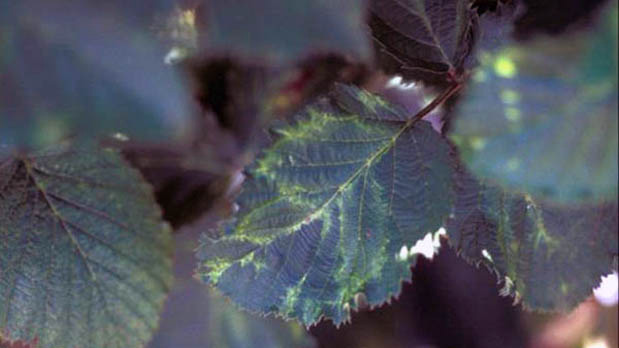
INSV in Tripe Crown
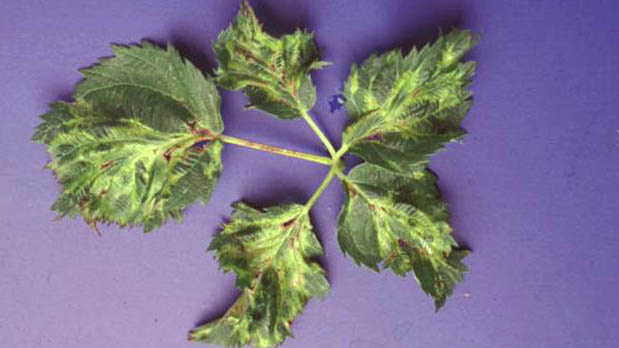
Blackberry yellow vein virus (BYVaV)
Range of symptoms of blackberry yellow vein virus on several blackberry cultivars. These images are from field plants that could have had mixed infections though they tested negative for raspberry bush dwarf, tobacco ringspot, tomato ringspot, and strawberry necrotic shock viruses.
-

Arapaho -
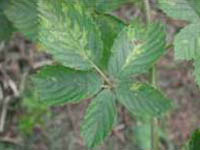
Nahavo -

Kiowa -

Choctaw
Multiple Infections
TRSV and INSV in Arapaho

TRSV and INSV in Arapaho

Unknown Virus – cane reddening and splitting
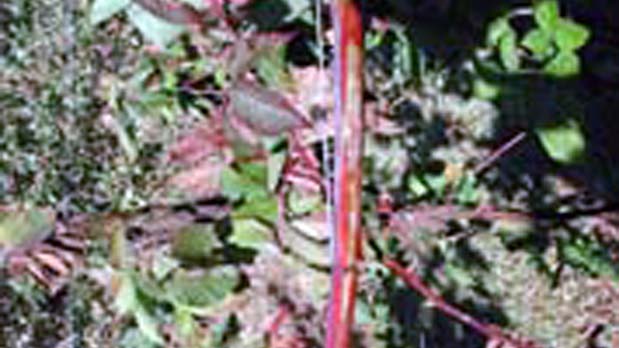
Root Damage & Visible Symptoms
Sublethal root infections from Phytophthora, feeding of dagger or root lesion nematodes, feeding by grubs, and crown gall will cause a general decline in plant health. Dig up plants and examine the roots for lesions and feeding damage, and conduct a nematode test.
Canes have galls Larva of rednecked cane borers feed inside primocanes creates a gall and girdles the canes. Infested canes either die or become weakend so they cannot growth in the following year when they are floricanes. Adults feed on leaves.
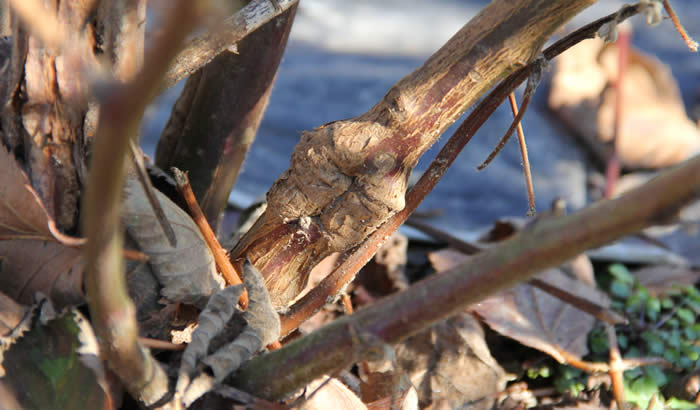
Root Abnormalities
Crown Gall
Crown gall can damage canes at the root level. Some cultivars may exhibit low vigor or nutrient deficiencies. Galls are visible at the soil line. The bacteria infects canes through wounds.
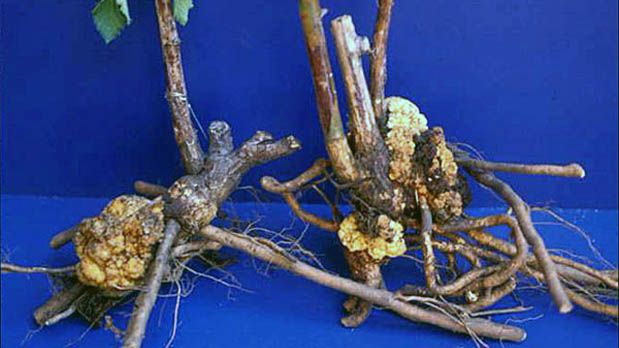

Crown Borer
Crown borer girdle canes a few inches above the soil line in spring and causes canes to wilt and die
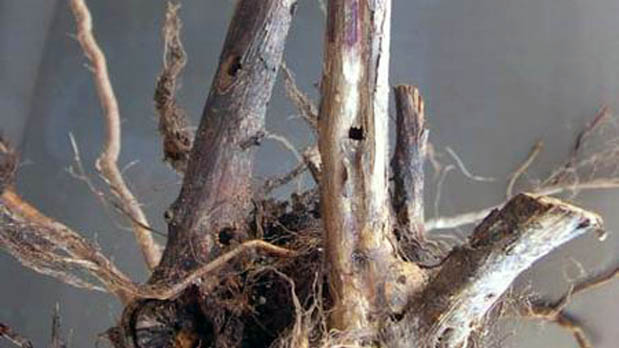
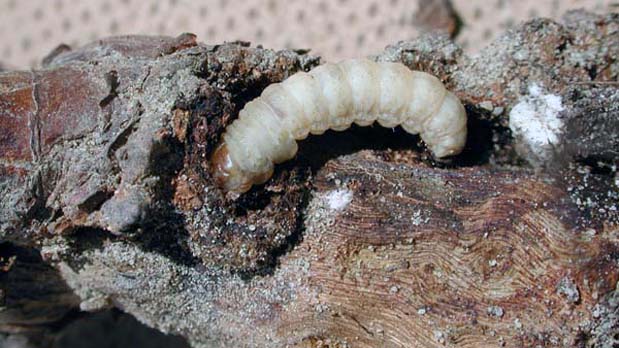
Pseudomonas
Pseudomonas is a relatively new disease to blackberry and often occurs later in the summer after a period of wet weather. ‘Arapaho’ most often shows these symptoms.

Nutrient deficiency
Nutrient deficiencies have not been documented in the southeastern United States. Soil and leaf analysis can be used to identify if a nutrient(s) is deficient.